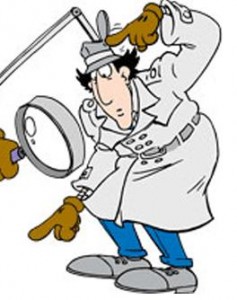A few months ago, we introduced the B.A.C.O.N. principle as a means of generating innovation and creating overall process improvement. One of the concepts of this grand principle is being analytical, which means being skilled at examining things through sound reasoning and thought. Today, I will explore one of the techniques that businesses can use to achieve analytical proficiency—a technique called Root Cause Analysis.
creating overall process improvement. One of the concepts of this grand principle is being analytical, which means being skilled at examining things through sound reasoning and thought. Today, I will explore one of the techniques that businesses can use to achieve analytical proficiency—a technique called Root Cause Analysis.
Finding the root cause of something is determining why it really happened. Most times, it is easier to just deal with an initial issue and move on to the next problem that presents itself. This approach to a solution is often called, “Putting a Band-Aid on the problem.” Granted, may seem the fastest and cheapest way of handling a problem. Unfortunately, problems handled this way usually return, because the real or root cause of an issue still remains.
Analyzing the root cause requires an analytical approach. There are several ways of handling root cause analysis. I will briefly examine the more popular methods. And to help solidify our understanding of the process; I will first engineer a dilemma and see how each of the analysis methods might be used to look at that problem. Let’s say that overall sales have has dropped 12% in the last month. For the purposes of this example, we will say that this is because catalogs for the Northwestern states were accidentally printed with the wrong phone number attached.
The first of our analytical methods, and the one that I recommend using most, is called the “fishbone diagram”. It closely examines the cause and effect relationship of things. This method was invented by Dr. Kaoru Ishikawa and is given its name because the results often look like a fish’s skeleton when completed. You start by writing the problem to study in the “head of the fish”. In our example, we would write “sales have dropped 12%”. We then create “bones” which represent categories to examine. Using brainstorming methods, we fine-tune factors that affect these categories and continue branching off more “bones” in an attempt to find a root cause. For our example dilemma, one of our “bones” might be “marketing (failed)”. We start asking why that is and learn that we “didn’t get orders from the Northwest”. We add another bone, and see that the “catalogs were misprinted”.
The next method to look at is called “business process mapping”. This method involves defining what a process does and what is considered a successful result from that process. Unlike the previous analysis method, process mapping doesn’t directly find the root cause of issues, but it is still a useful tool in helping us narrow our searches. Process maps or process flow diagrams are useful because we can easily see where a process starts to fail. If by going through a process, we don’t achieve an expected result; we know to start focusing our attention on that process. In our example, we might look at marketing and notice that sales for the Northwest did not meet expectation last month, but the other regions performed as predicted by our process maps. This would trigger us to start looking at differences that occurred in the Northwest.
Another method of root cause analysis is the “scatter diagram”. Like the fishbone diagram, it studies the relationship of two variables. But it cannot be used to determine if these factors are the cause or effect of one another. Scatter diagrams are basically used to determine if a relationship simply exists and the strength of the relationship between those two factors. This is done by plotting points on a graph and seeing if a pattern develops. For our example, let’s say we find a relationship between sales and returns. In our analysis, we may learn that in fact, with more sales we have more returns, and that the rate of returns vs. sales remains very constant. Now we can say that there is a strong relationship between sales and returns. But since we cannot say that one causes the other, we cannot say that because returns low, sales are low. How does this help us though? Well we might determine using a scatter diagram that demand has no relationship to say something like the amount of inventory received, and so we can safely choose to focus on a different area instead.
So let’s move on to our next analytical method. This method is called “benchmarking”. This is the technique of comparing ones processes or metrics to those considered to be the industry’s best. The term comes from early shoe makers, where patterns were marked out on benches around people’s feet before shoes were created. As a tool, it is useful for quick comparisons and possibly as an early alert. In our example for example, we might have benchmarks set up to gauge the effectiveness of a catalog campaign. At a given amount of time, we would see that the Northwest was not meeting our marks. We would start to look at any issues there and see that there was a problem with the catalog itself.
The next method to examine is the “5 Why’s” method. This conjures up memories of the Mindy and Buttons cartoon on Animaniacs where Mindy would constantly ask, “Why?” after each reply posed to her. Like Mindy, we must constantly ask questions like, “Why is that true?” or “Why does it work this way?” In our catalog example, we would first ask, “Why are we loosing sales?” The answer is, “Because catalog sales are down.” We then ask, “Why are catalog sales down?” The answer is, “Because the Northwest states are not placing orders.” We then ask, “Why are they not placing orders?” In most cases, the answer at this point would probably be, “I don’t know.” This is where you would look and see that it is “because they cannot call in.” We again ask, “Why?” Eventually we learn it is because of a misprint on the catalogs.
The final method we would look at is called the “Five W’s and How”. This is the old journalism technique, where you must ask, “Who, What, When, Where, Why, and How”. This technique is designed to look at something from all angles and has some similarities to the fishbone diagram. In fact, one of the fishbone templates you can start with uses these as “bones”. This method is excellent for keeping people brainstorming. In our example, if we get stuck on something, we can use this method to generate addition ideas and keep the energy and momentum flowing.
There you have it. These are methods you can use in root cause analysis. Root cause analysis in turn is just one technique used to become analytically proficient. Hopefully you can use these methods when exploring your next problem. Remember, root cause analysis will take time and resources. But in the long run, you usually benefit more from its practice. Till next time, be B.A.C.O.N.!

